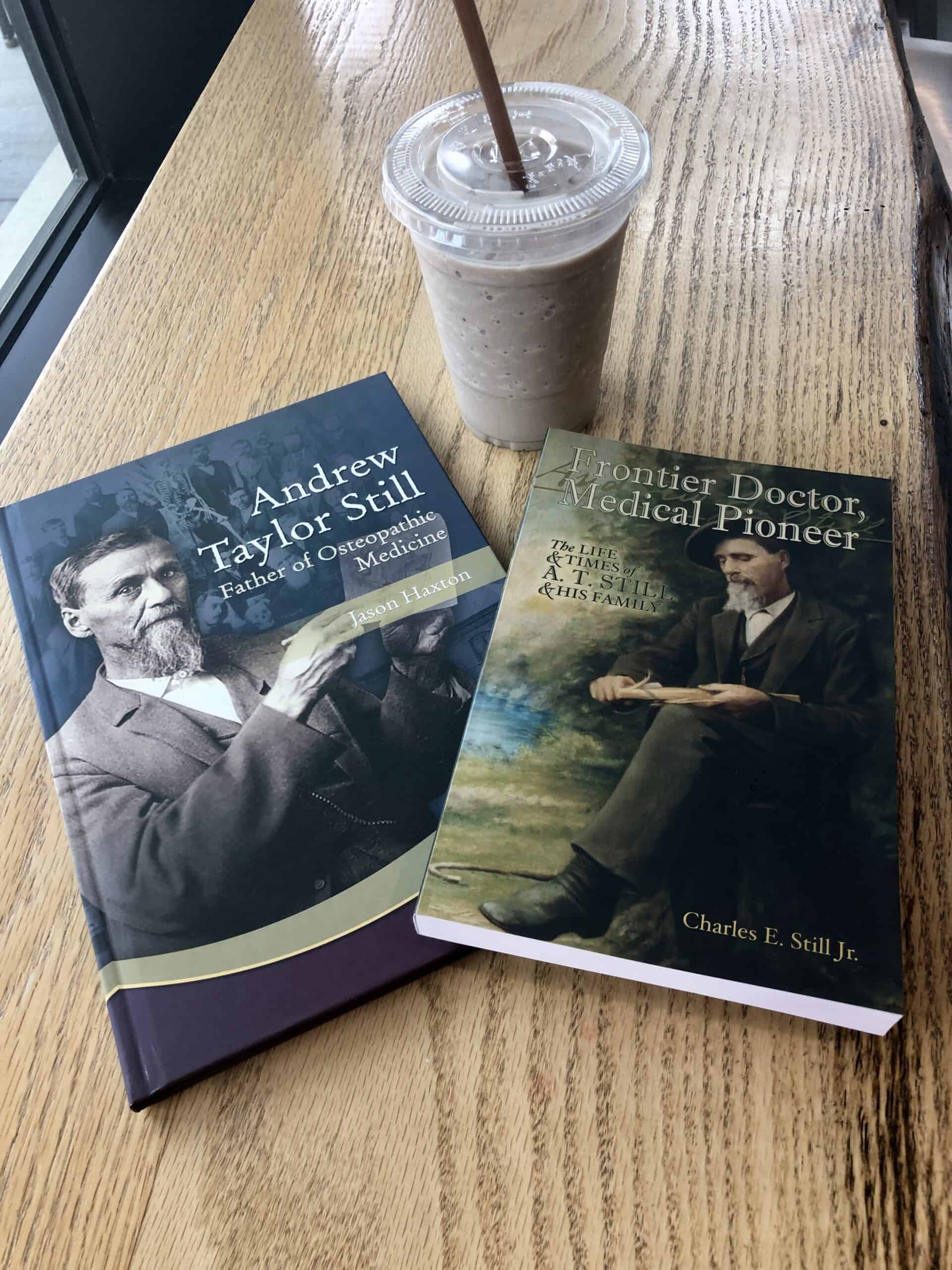In a tiny town just outside of Kirksville Missouri, I booked a stay in an unusual boutique hotel. The Depot Inn & Suites in La Plata, Missouri contains a museum within. It was built in 2006, styled as a train depot. The original owner never worked for the train system, but is a “rail fan”. He decorated the interior and exterior with railroad memorabilia. Soon, enthusiasts came from all over the country, and started donating from their own collections.
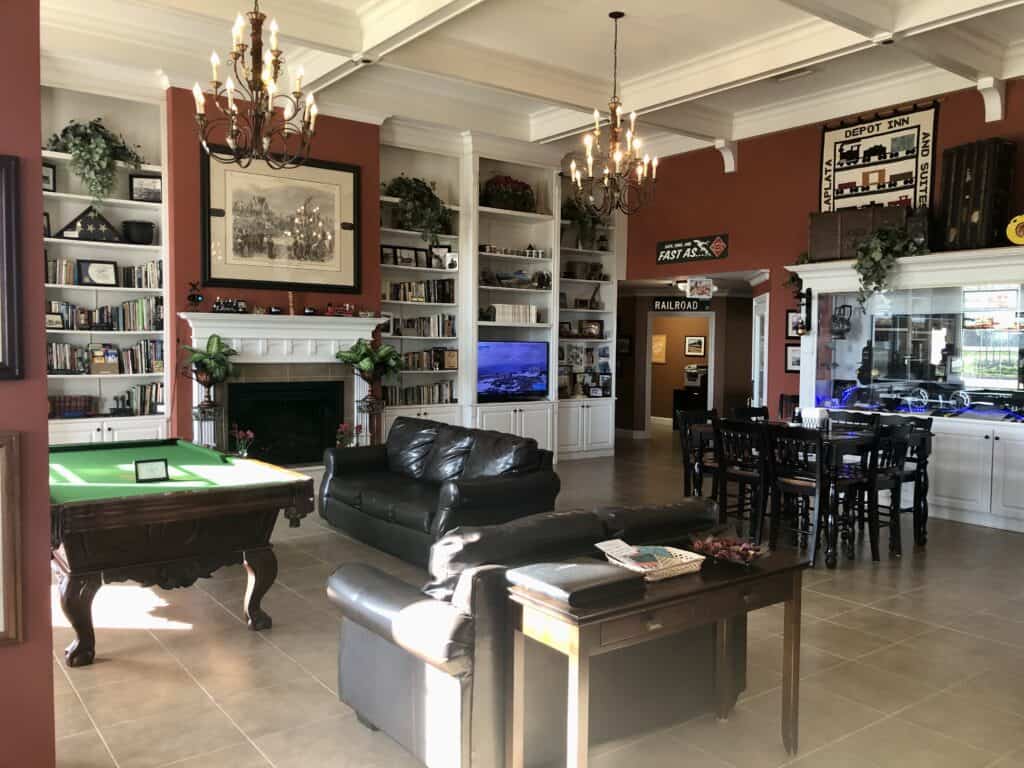
It is fun to peruse the lobby and enjoy the train books and mementos on every shelf.
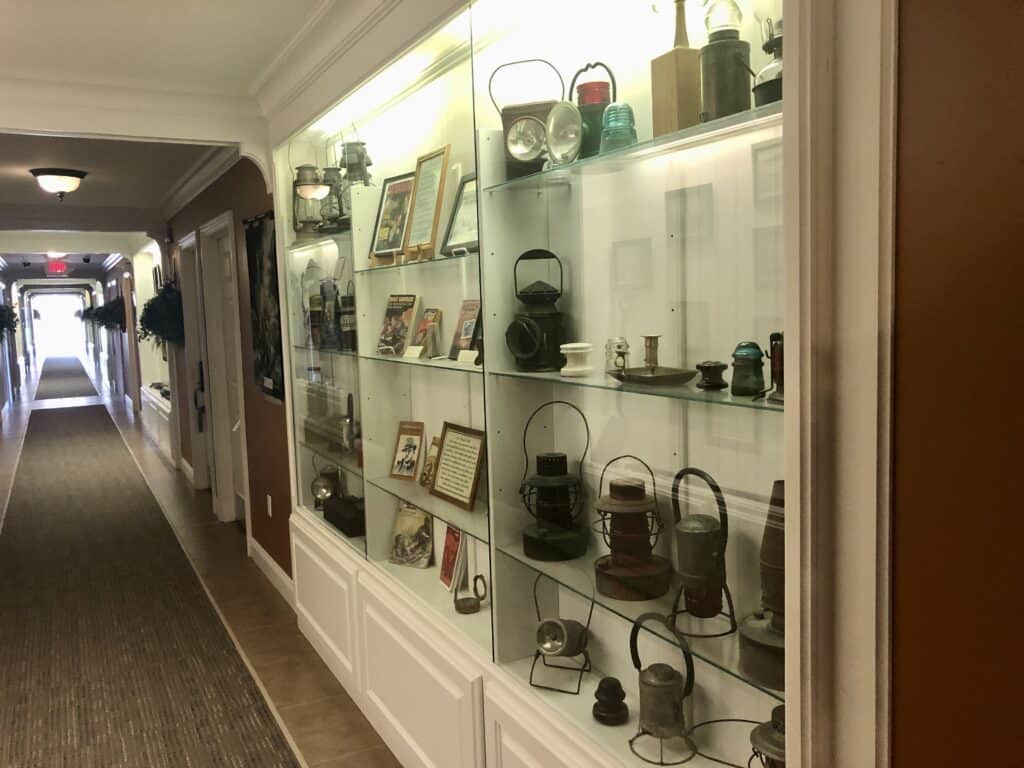
Even the hallways are lined with artifact displays. It is truly a clever design. Instead of just decorating a hotel in the standard fashion, why not adorn the spaces with intriguing curios. It made my stay an enjoyable learning experience. The staff recommended I run down the road to the historic town train depot. Off I went and made it just in time to watch the grand locomotive pulling in.

I met Amy, who works at the depot. She told me it was built in 1895, and they now see 60 freight trains and 2 passenger trains pass through each day. They receive an average of 6 – 10 passengers daily. I saw houses just across the tracks and I wondered what it would be like to live that close to the constant rumble. In noticing a lack of congested crowds on the platform, I decided it would be relaxing to travel by train. With the frustration of the current delays and cancellations of the airlines, a train ride seems far more reliable. Amy says trains rarely get off schedule unless there is a major snow storm in a particular city. Otherwise they run predictably.
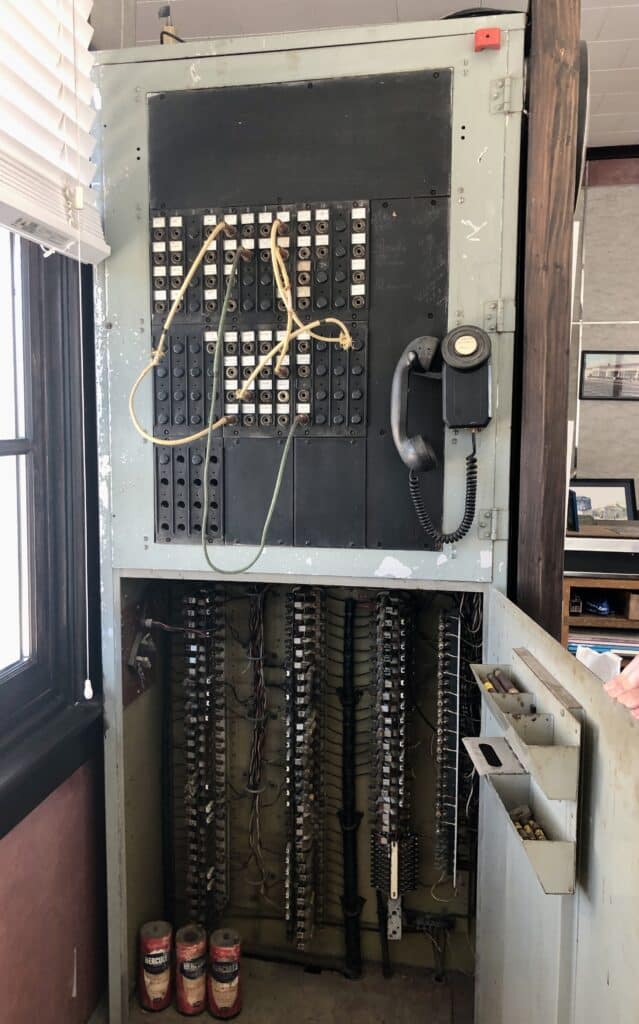
Amy showed me this old train switchboard in the office. Apparently, it is quite remarkable. Train enthusiasts would be appreciative of its significance. The longer I live in the Midwest, the more I garner a recognition of the value of the train system in our country, as many of the population here has worked in the industry.
I drove to nearby Kirksville and asked the locals what I should see. They sent me to a museum on the campus of the A.T. Still University. I walked into a tiny space that could take me less than a half hour to view. Little did I know what all that small room held. I met Jason Haxton, the Director of the Museum of Osteopathic Medicine. He graciously gave me a private tour. He began with the story of the founder of Osteopathic medicine – Dr. Andrew T. Still. And what a story it is! Jason generously gave me two books written about this man.
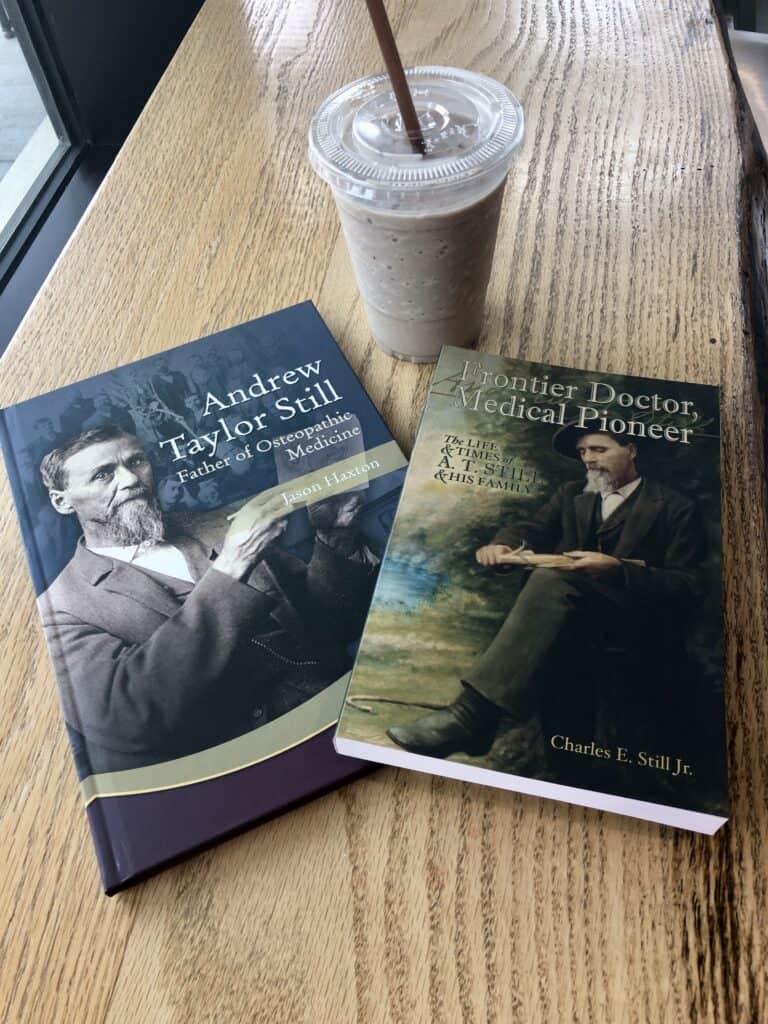
One was written by Jason, and the other by a direct descendant of Dr. Still. Both are fascinating reads, but to hear Jason tell the story in person is gripping, as he is an inspiring personality. If you visit, ask for Jason. He will heighten your experience at the museum.
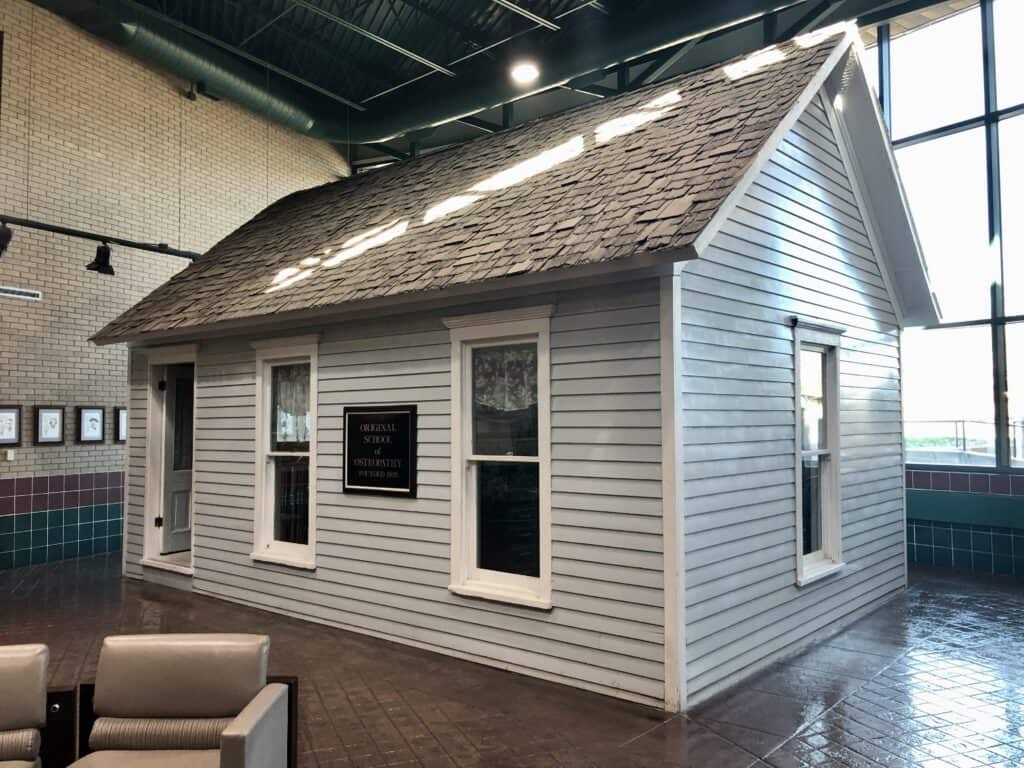
Back in the 1800’s, Andrew Still tried farming, but hail destroyed his crops. So he tried teaching, but couldn’t earn enough money to support his family. He finally decided to join the profession of his father and brother, and become a physician. During that era, treatment consisted mainly of leeches, blood letting, and poisonous drugs (arsenic and mercury). Andrew couldn’t buy into it, as it was obviously harmful. So he decided to start his own branch of medicine, which he named Osteopathy. He determined that the human skeleton and muscles support and protect all internal organs and blood vessels. He believed that manual manipulation could realign the interior body structure that had become skewed and thus return it to its efficient functionality. So he opened the first school of Osteopathy in 1892, which now stands in the lobby of the Museum. Keep in mind how small this school is as you hear……the rest of the story.
The original school soon outgrew its building, as people were helped by this new branch of medicine and started turning from the primitive methods of treatment in existence then. Today, it is a full University, plus there are currently 62 U.S. schools and 200 international schools for D.O.s. Jason says 25% of doctors are Osteopaths. D.O.s are full physicians who perform surgery and write scripts for medications, but they will generally start with a more naturally conducive form of treatment. It is remarkable that a frontiersman began a movement in a small prairie town that has now encircled the globe.
I deliberately left out much of the story, because I don’t want to rob you of hearing about it yourself. This museum is astounding. More so than I realized. Jason said they have worked for years to become accredited. They just succeeded. And what a stunning accomplishment, because only approximately 1,000 out of 33,000 museums are accredited. So this one is a definite must-see. Before I left, Jason showed me one last display. This photo is courtesy of the Museum of Osteopathic Medicine, where 85% of their displays are thankfully provided online for the world to access.
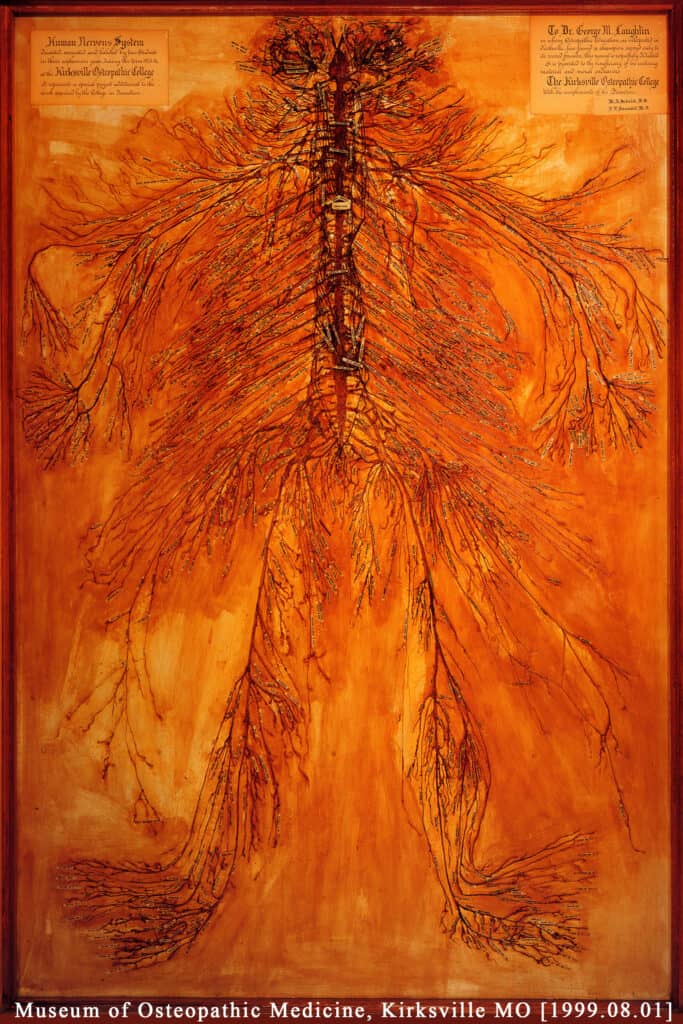
This is a nervous system removed from an adult cadaver. There are only 4 in the world. As I stood looking at the thin, delicate nerves, that would be intertwined with vital vessels, I finally realized how a minor misalignment in the skeletal/muscular structure could create significant problems within the body. So, I came right home and set to finding myself a D.O. And in the meantime, I went immediately to a chiropractor, for neck and leg pain resulting from my constant road trips. Chiropractic medicine grew out of Osteopathy. I visited Dr. Ketteler, who used manual and mechanical manipulation. I came up off that table with pain resolved and a lightened sensation in my body.
I learned so much on this trip that has benefited me personally. I came home with information to enhance my life. How glad I am that I set my sail for Kirksville Missouri.

